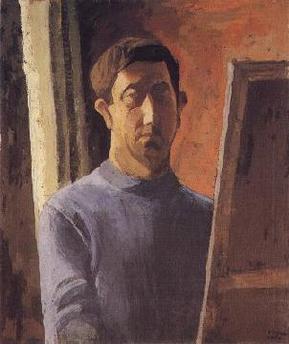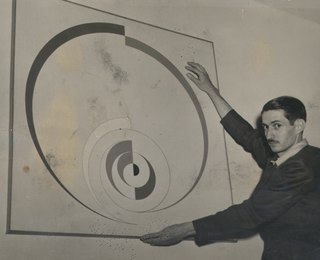
The National Museum of Contemporary Art is an art museum located in the Chiado neighbourhood of Lisbon, Portugal. It was created in 1911 and re-inaugurated, in new installations, in 1994.

The Museu Nacional de Arte Antiga, also known in English as the National Museum of Ancient Art, is a Portuguese national art museum located in Lisbon. With over 40,000 items spanning a vast collection of painting, sculpture, goldware, furniture, textiles, ceramics, and prints, MNAA is one of the most visited museums in Portugal.

João Manuel Navarro Hogan was a Portuguese painter and printmaker.

Josefa de Óbidos was a Spanish-born Portuguese painter. Her birth name was Josefa de Ayala Figueira, but she signed her work as "Josefa em Óbidos" or "Josefa de Ayalla". All of her work was executed in Portugal, her father's native country, where she lived from the age of four. Approximately 150 works of art have been attributed to Josefa de Óbidos, making her one of the most prolific Baroque artists in Portugal.
Albuquerque Mendes is a Portuguese artist. He works in the fields of painting, performance art and installation.

Gretta Sarfaty, born Alegre Sarfaty, is also known as Gretta Grzywacz and Greta Sarfaty Marchant, also simply as Gretta. is a painter, photographer and multimedia artist who earned international acclaim in the 1970s, from her artistic works related to Body art and Feminism. Born in Greece, in 1947, she moved with her family to São Paulo in 1954, being naturalized as Brazilian.

Tejo Power Station is a cultural centre that presents the evolution of energy with a Museum of Science and Industrial Archaeology concept, where themed and experimental exhibits live side by side with a great variety of cultural events. Located in the Belém area on terrain Lisbon usurped from the Tagus river at the end of the 19th century, in one of the city's areas with the greatest concentration of historical monuments where one can find, among others, the Jerónimos Monastery, the Belém Cultural Centre, the Tower of Belém, the Padrão dos Descobrimentos, the Portuguese Presidential Palace and Museum, the Coach Museum or the Cordoaria Nacional . A building classified as a Public Interest Project, the Electricity Museum unfolds along the perimeter of the old thermoelectric plant – the Tejo Power Station, which illuminated the city of Lisbon for more than four decades.

Alberto Mabungulane Chissano was a Mozambican sculptor best known for his work using indigenous woods, and sculptures in rock, stone and iron. He is considered to be one of Mozambique's most important and influential artists, together with the painter Malangatana Ngwenya.

Francisco Tropa is a Portuguese sculptor and visual artist. He lives and works in Lisbon.
Judith Lauand was a Brazilian painter and printmaker. She is considered a pioneer of the Brazilian modernist movement that started in the 1950s, and was the only female member of the concrete art movement based in São Paulo, the Grupo Ruptura.

Ivan Ferreira Serpa was a Brazilian painter, draftsman, printmaker, designer, and educator active in the concrete art movement. Much of his work was in geometric abstractionism. He founded Grupo Frente, which included fellow artists Lygia Clark, Helio Oiticica, and Franz Weissmann, among others, and was known for mentoring many artists in Brazil.
Hermelindo Fiaminghi was a Brazilian painter, designer, graphic designer, lithographer, professor, and art critic, known for his geometric works and exploration of color.
Geraldo de Barros was a Brazilian painter and photographer who also worked in engraving, graphic arts, and industrial design. He was a leader of the concrete art movement in Brazil, co-founding Grupo Ruptura and was known for his trailblazing work in experimental abstract photography and modernism. According to The Guardian, De Barros was "one of the most influential Brazilian artists of the 20th century." De Barros is best known for his Fotoformas (1946-1952), a series of photographs that used multiple exposures, rotated images, and abstracted forms to capture a phenomenological experience of Brazil's exponential urbanization in the mid-twentieth century.

The Portuguese World Exhibition was held in Lisbon in 1940 to mark 800 years since the foundation of the country and 300 years since the restoration of independence from Spain.

The Museum of Art, Architecture and Technology (MAAT) is a museum in Lisbon, Portugal.

The Museum of Modern Art of Bahia is a modern art museum located in Salvador, Bahia, Brazil. It is located within Solar do Unhão, a historical site dating to the 16th century, on the margin of the Bay of All Saints. The museum was founded in 1960 under the architect Lina Bo Bardi (1914-1992) and initially located in the foyer of the Castro Alves Theater; it moved to its present location in 1963. MAM-BA is one of twelve state museums linked to the Institute of Artistic and Cultural Heritage (IPAC), an authority of the Department of Culture of the State of Bahia.

The Bahia Museum of Art is a museum located in Salvador de Bahia, Brazil. This museum is one of the oldest museums in the State of Bahia.

During the 2023 Brazilian Congress attack, numerous works of art were targeted by supporters of Brazilian former president Jair Bolsonaro.
















